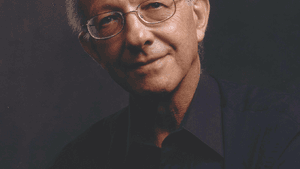Stay in the Loop
BSR publishes on a weekly schedule, with an email newsletter every Wednesday and Thursday morning. There’s no paywall, and subscribing is always free.
The Schumann Quartet plays Schumann and more
PCMS presents the Schumann Quartet with Gilbert Kalish

The Schumann Quartet is not, as you might think, named for the composer Robert Schumann. Its name originates with the three Schumann brothers — violinists Erik and Ken and cellist Mark — who formed it in 2012, together with the Estonian-born violist Liisa Randalu. Currently in residence at New York’s Lincoln Center, the quartet visited the Philadelphia Chamber Music Society (PCMS) this week.
Full of surprises?
The Schumanns advertise themselves as something different, having “dispensed with certainties” about performance so that, they say, “we ourselves never know what will happen” onstage. This credo sounds both obvious and alarming, though they’re not the first to take this approach: mid-20th-century composers wrote aleatory music in which general guidance rather than fixed notation made each performance of a given “work” something different. But Haydn and Mozart did write out all their notes, markings, and tempi with the expectation that their instructions would be followed.
There was nothing untowardly surprising in the Schumann’s first two works: Haydn’s Quartet, Op. 33, No. 5, and (yes) the Haydn Quartet, Op. 41, No. 2. Haydn might be the appropriate signature composer for the quartet’s aesthetic, because his music, especially in his 67 string quartets, is full of quirks, turns, and surprises for the listener. In this sense, he was both the founder of the classical style, with its formal balances, and its cheeky subverter.
The Op. 33, No. 5, fifth of the set of six published in 1782, Schumann's 50th year, begins with what must be the shortest introduction in musical history. It’s a soft riff that lasts only a second or two before plunging into the opening movement’s Vivace assai. From there through the single plucked note that ends the Largo cantabile and through the high spirits of the succeeding Scherzo and Allegro molto vivace, Haydn’s inimitable sense of adventure and play — vastly different from Beethoven’s, but the indispensable foundation of his successor’s style — is unflagging. First violinist Erik Schumann, clearly the group’s leader, displayed a beautiful lyric tone, especially in the Largo. The group’s general approach was brisk dispatch.
A mixed bag
There was no dallying either in the second of Robert Schumann’s three Op. 41 quartets. Schumann’s habit, particularly when younger, was to seize on a form and exploit it almost exclusively until moving on. Thus, his first 20-odd published works seemed to mark him as even more singlemindedly dedicated to the piano than Chopin, until he plunged into his first song cycles. There were the three 1841 symphonic essays (Symphonies 1 and 4, and the near-symphony of the Overture, Scherzo, and Finale), and the three quartets of 1842.

Schumann returned to the symphony and to piano and song, but never again to the quartet form. Did he feel he had said as much as he wanted to in it? One can’t be sure, but the works he did compose reflect the influence of Mendelssohn (to whom they are dedicated).
Mendelssohn’s own earliest quartets, remarkably precocious and daring, bear comparison to the contemporary works of Beethoven and Schubert. But the Schumann Op. 41 set, although thoroughly grounded in the quartet literature and, like everything Schumann wrote, romantically expressive, gives the impression of a pause in development of the form. The performance here was accomplished but not, to this listener, very searching. The music would have benefited from a greater sense of projection and contrast among the movements.
The suggested surprises turned up in the program’s concluding work, Shostakovich’s Piano Quintet, in which the quartet was joined by veteran pianist Gilbert Kalish. Shostakovich had a brief but distinctive neoclassical period in his First String Quartet, the Largo of his Sixth Symphony, and this, his only quintet. It was received with general favor at its premiere, capped (if that’s the right word) with a Stalin Prize. In the evening’s program notes, Bernard Jacobson wrote of the work’s “bucolic joy,” “divine lightness,” and “crystalline texture,” certainly not qualities generally associated with Shostakovich. With all its dips and shifts of mood, however, there is a reigning sense of clarity and formal control here, and of sheer delight in music-making, that suggests the pleasure Jacobson took in it.
The Schumann Quartet saw the Quintet (at least on this occasion) quite differently: as a tragically, lugubriously Romantic work, and Kalish’s pedal-heavy piano stuck it still further in gloom. It can sometimes be revelatory to hear a familiar work in different dress. It was not so in this performance, despite the quartet's evident commitment to its vision.
What, When, Where
The Schumann Quartet with Gilbert Kalish. String Quartet in G Major, Op. 33, No. 5., by Franz Joseph Haydn; String Quartet in F, Op. 41, No. 2., by Robert Schumann; Piano Quintet in G Minor, Op. 57, by Dmitri Shostakovich. Philadelphia Chamber Music Society. October 31, 2017, at the Kimmel Center's Perelman Theater, 300 S. Broad Street, Philadelphia. (215) 569-8080 or pcmsconcerts.org.
Sign up for our newsletter
All of the week's new articles, all in one place. Sign up for the free weekly BSR newsletters, and don't miss a conversation.

 Robert Zaller
Robert Zaller